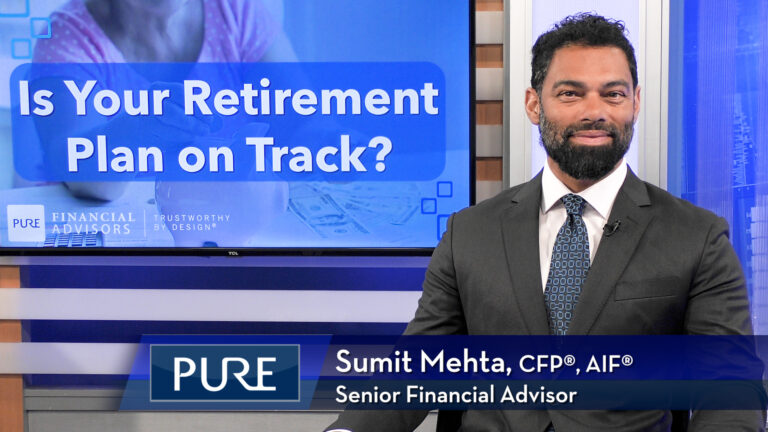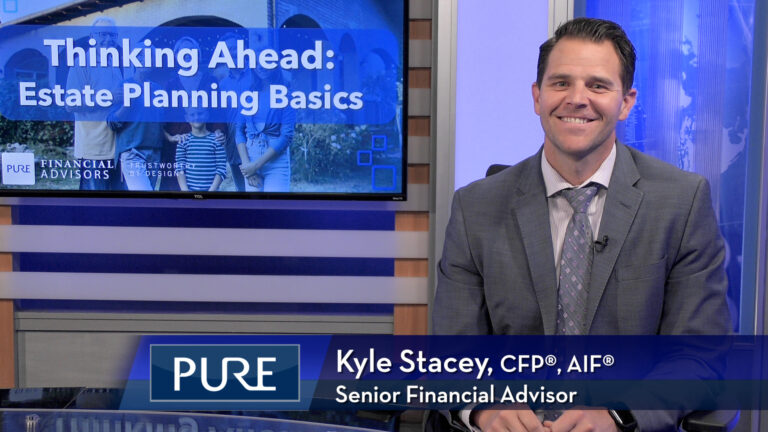It’s crucial to know how the new RMD rules will impact you to properly plan your finances in the future. Jeff Brecht, CFP®, AIF®, Pure Financial Planner, Los Angeles branch, points out the new RMD changes with the passing of the SECURE 2.0.
FREE GUIDE | The SECURE Act 2.0 Guide
Transcript
For retirees or those approaching retirement who are worried about mandatory retirement account distributions, getting up to speed on the new RMD changes is very important.
As of January 1, 2023, the age at which owners of retirement accounts must start taking RMDs will increase to 73. If you turned 72 in 2022 or earlier, you will need to continue taking RMDs as scheduled.
Starting in 2023, the massive penalty for failing to take an RMD will decrease to 25% of the RMD amount not taken, down from 50%. The penalty will be reduced to 10% for IRA owners if the account owner withdraws the RMD amount previously not taken and submits a corrected tax return in a timely manner.
SECURE 2.0 addresses a few issues related to the use of annuities with retirement savings accounts. For instance, if a retirement account includes an annuity, the account was split under prior law between the part holding the annuity and the part that doesn’t for purposes of applying the RMD rules. This could result in higher RMDs. SECURE 2.0 allows you to combine distributions from both parts when calculating your annual RMD amount. For in-plan annuity payments that exceed the participant’s RMD amount, the excess annuity payment can be applied to the year’s RMD.
If you’re turning 72 in 2023 and have already scheduled your withdrawal, you may want to consider updating your withdrawal plan. Consider when to take your first RMD: Either by December 31, 2024, or delay until no later than April 1, 2025. Remember, if you delay your first RMD to April 1, 2025, you’ll need to take two RMDs in one tax year: Your first by April 1, 2025, which satisfies your required withdrawal for 2024, and your second by December 31, 2025, which satisfies your required withdrawal for 2025.
SECURE 2.0 does away with the need to roll over funds from a Roth 401(k) to a Roth IRA. Instead, as with Roth IRAs, Roth 401(k) accounts won’t be subject to the RMD rules before the account holder dies. This generally kicks in starting in 2024; however, an exception applies to RMDs required before 2024 but not required to be paid until January 1, 2024, or later.
Additionally, Roth accounts in employer retirement plans will be exempt from the RMD requirements starting in 2024. For those who are headed for retirement in 10 years SECURE 2.0 also pushes the age at which RMDs must start to 75 in 2033.
It’s crucial to know how the new RMD rules will impact you in order to properly plan your finances in the future if you need help talk to a Certified Financial Advisor so you’re not caught off guard when it’s time for you to take RMDs from your retirement savings accounts.
Subscribe to our YouTube channel.
IMPORTANT DISCLOSURES:
• Investment Advisory and Financial Planning Services are offered through Pure Financial Advisors, LLC, a Registered Investment Advisor.
• Pure Financial Advisors LLC does not offer tax or legal advice. Consult with your tax advisor or attorney regarding specific situations.
• Opinions expressed are subject to change without notice and are not intended as investment advice or to predict future performance.
• Investing involves risk including the potential loss of principal. No investment strategy can guarantee a profit or protect against loss in periods of declining values.
• All information is believed to be from reliable sources; however, we make no representation as to its completeness or accuracy.
• Intended for educational purposes only and are not intended as individualized advice or a guarantee that you will achieve a desired result. Before implementing any strategies discussed you should consult your tax and financial advisors.
CFP® – The CERTIFIED FINANCIAL PLANNER™ certification is by the Certified Financial Planner Board of Standards, Inc. To attain the right to use the CFP® designation, an individual must satisfactorily fulfill education, experience and ethics requirements as well as pass a comprehensive exam. Thirty hours of continuing education is required every two years to maintain the designation.
AIF® – Accredited Investment Fiduciary designation is administered by the Center for Fiduciary Studies fi360. To receive the AIF Designation, an individual must meet prerequisite criteria, complete a training program, and pass a comprehensive examination. Six hours of continuing education is required annually to maintain the designation.













